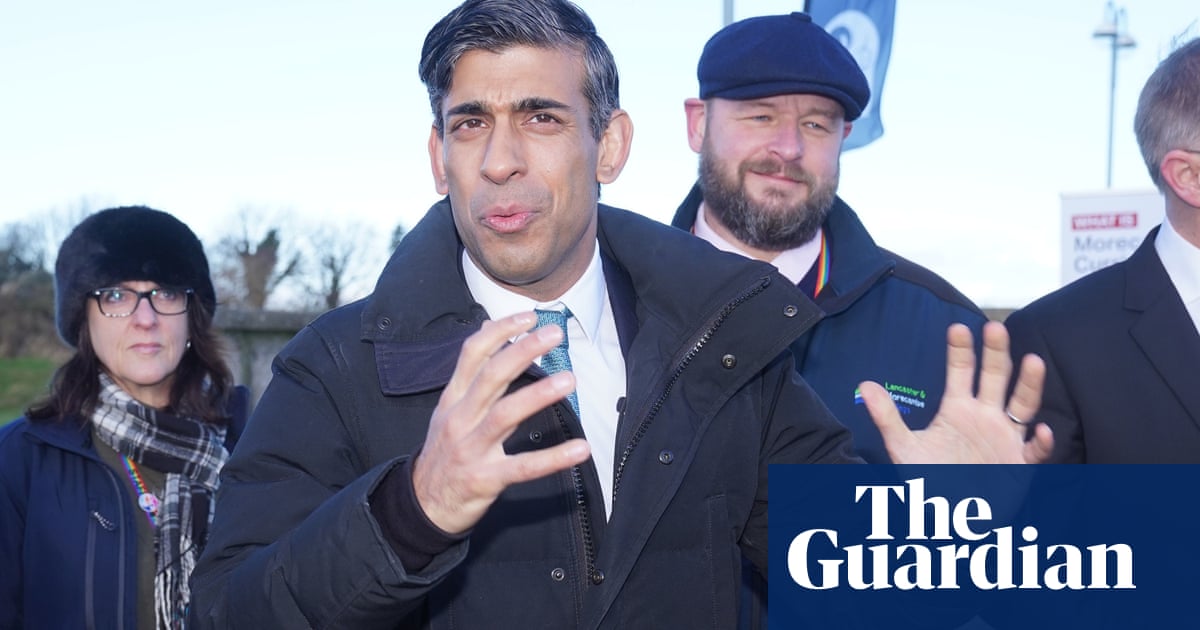
There have been plenty of bad years for the economy in the recent past and 2022 is shaping up to one of the worst of them. Energy bills are soaring. Taxes are going up. Inflation has returned with a vengeance. Living standards are set for their biggest fall since modern records began in the 1950s.
Faced with this cocktail of misfortune, it was always the height of optimism for Rishi Sunak to imagine he could stick to his plan of delivering a short, policy-light update on the state of the economy in a spring statement.
So it has proved. Britain’s cost of living crisis – amplified by the impact of Russia’s invasion of Ukraine – meant the spring statement would morph into what has become the chancellor’s speciality in his two and a bit years in the job, a mini-budget.
Tory backbenchers cheered lustily when Sunak pulled his rabbit out of the hat – a 1p income tax cut designed to come into force in April 2024, a month before the date being pencilled in for the next general election. But budgets – and mini-budgets – that look good on the day often look less good in the weeks that follow. And there is every risk the chancellor’s latest offering will conform to this pattern.
For a start, Sunak’s package was a lot more modest than he tried to make it sound. The package of new measures announced will provide a £9bn stimulus to the economy – or about 0.4% of the economy’s annual output.
But as Paul Dales of Capital Economics pointed out: that will still leave households facing a £20bn hit to their real disposable incomes from rising food, fuel and utilities prices over the next couple of years. Living standards, according to the Office for Budget Responsibility (OBR), are still going to be cut by more than 2% this year.
For the most vulnerable – those not working and reliant on state benefits – the squeeze will be even more severe. That’s because they won’t benefit from the £3,000 increase to the threshold for national insurance contributions – a move that mainly helps better off households – but will be clobbered by rising inflation. As the Resolution Foundation thinktank pointed out, of every £3 of new help provided by the chancellor, £2 will go to people in the top half of the income distribution.
Pensions, universal credit and other benefits are going up by 3.1% in April, a month when the annual inflation rate is likely to climb above 8%. The OBR thinks inflation is on course to reach a 40-year-high of almost 9% this year, something that will also put the squeeze on the resources available to Whitehall spending departments.
Nor do the chancellor’s credentials as a tax-cutting chancellor really stand up to scrutiny. While Sunak would like to be seen as the son of Margaret Thatcher, the net tax cuts announced in the spring statement offset about a sixth of the tax rises introduced since he became chancellor in February 2020. The tax takeaways announced last year – including the freezing of income tax personal allowances and the new health and social care levy – are worth almost four times as much as the giveaways just announced.
Sunak has been firefighting ever since he became chancellor. There was a time last autumn, when the end of the furlough scheme went more smoothly than expected, when he could envisage an end to permanent crisis management, but Ukraine means that is no longer feasible, in the short-term at least.
The year ahead will be brutal for millions of people. Growth will slow and inflationary pressure will be strong. Sunak is going to come under pressure to use the money he is squirrelling away from pre-election sweeteners to help households and small businesses this year. This mini-budget is unlikely to be the last.












